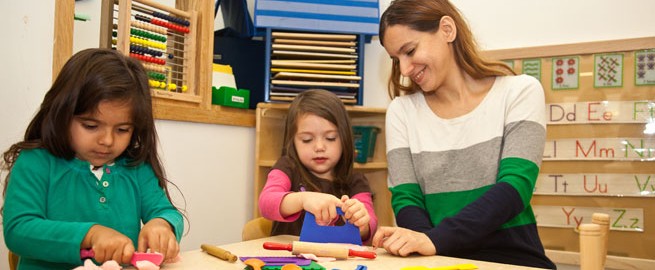Guidelines for Preschoolers – What You Want to See!
What You Want to See |
What You Don’t Want to See |
| Teachers providing meaningful classroom activities that challenge children to move forward. At the same time, children are able to successfully complete many of the tasks encountered so that they gain self-confidence, feel proud of their accomplishments, and learn to love learning. | Teachers giving children tasks that they find boring or too easy – such as being asked to glue pre-cut shapes onto pieces of paper.
OR Teachers having expectations that are out of line with the children’s developmental capabilities – such as expecting a 3 year old to write his/her name legibly. |
| Teachers planning a curriculum that engages the children. The classroom is arranged to give children easy access to toys and other materials. Children have the space to interact with their peers and adults. | The classroom is disorderly; children wander around, not really becoming involved in activities.
OR The environment is so rigidly structured that children do not feel free to explore materials or interact with others. |
| Teachers maintaining a safe, healthy environment and carefully supervise the children. | Teachers are inattentive and careless about monitoring the indoor and outdoor safety of the children.
OR Teachers are so nervous about safety that children feel constrained. For instance, children are not allowed to ride tricycles around the playground although it is adequately padded and free of obstacles. |
| Teachers taking adequate safety precautions so that children can take age-appropriate risks. For instance, 3- and 4-year olds can help bake cookies and, with a grownup’s assistance, use pot holders to take the baking sheets out of the oven. | Teachers saying they are teaching the children to be independent, when in fact they put them in dangerous situations. |
| Teachers planning a balanced schedule in which children don’t feel rushed or fatigued. | Teachers letting an activity go too long, so children either become tired out or bored. |
| Teachers nurturing the 3- and 4- year-olds developing language and communication skills by encouraging conversation. They talk to children, listen to their responses, and provide opportunities for children to talk with one another. | Teachers talking a lot to children, but they are speaking baby talk or asking questions the children can’t possibly answer. |
| Teachers helping children get the most out of every learning situation. They ask children questions about what he/she is doing, offer suggestions about other things to do, and add new challenges as the child is ready for them. | Teachers thinking of themselves as supervisors and not getting involved with the children’s play. Children may repeat the same tasks over and over without the teachers redirecting them to another activity. |
| Teachers setting clear limits about acceptable social behavior. At the same time, they know that 3- to 4-year-olds get easily frustrated and are not always able to express their feelings. | Teachers spending a lot of time yelling at the children for breaking rules and punishing troublemakers. |
| Adults reading to the children every day – individually, in small groups, and sometimes even as a whole class. Teachers helping the children talk about what they have heard and help them relate the stories to activities in the classroom or at home. | Teachers reading stories only occasionally and always to the group. |
| Teachers making parents part of the community of learners. Parents are welcomed into the classroom, and teachers consult with them about their child’s needs and progress. | Teachers feeling that they are the experts, and discouraging parents from offering suggestions or visiting the classroom. |


